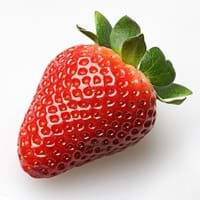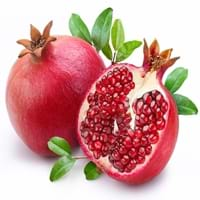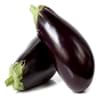Health Benefits
Anti depressant, Asthma treatment, Cancer prevention, Heart care, Improves stomach health, Increases metabolic rate, Prevents constipation
Cancer prevention, Heart care, Helps in cartilage regeneration, Improves stomach health, Increase in haemoglobin, Increases metabolic rate, Prevents constipation
General Benefits
Anti-inflammatory properties, Boosts immune system, Controls blood pressure, Eye care, Maintains healthy cholesterol level, Strengthens bones
Boosts immune system, Controls blood pressure, Controls blood sugar levels, Digestive aid, Maintains healthy cholesterol level
Skin Benefits
Anti-aging benefits, Brightens and lightens complexion, Skin cleansing, Treatment of acne, Treatment of skin diseases
Anti-aging benefits, Skin rejuvenation, Treatment of acne
Hair Benefits
Promotes longer and healthier hair, Shiny hair, Treatment of dandruff
Prevents hair loss, Promotes longer and healthier hair, Treatment of dandruff
Allergy Symptoms
Chest pains, Eczema, Hives inside the cheeks, Itching, Skin rash, Swelling, Watery eyes
Abdominal pains, Anaphylaxis, Itching
Side Effects
Allergic reaction
Allergic reaction, Cold, Breathing difficulty, Irritation, Swelling
Best Time to Eat
As a snack in the late afternoon, Don't consume at night and before bed, Don't eat after meal, Morning time (before lunch), Strictly avoid empty stomach
Best if taken as a breakfast (or empty stomach), As a snack in the late afternoon, Eat the fresh ones, avoid mixing with any other foods, don't eat after meal., Morning time (before lunch)
Vitamin B5 (Pantothenic Acid)
Vitamin C (Ascorbic Acid)
Vitamin K (Phyllochinone)
Phytosterol
Not Available
Calories in Fresh Fruit with Peel
Not Available
Calories in Fresh Fruit without Peel
Not Available
Calories in Frozen Form
Not Available
Calories in Canned Form
Not Available
Calories in Juice
Not Available
Calories in Jam
Not Available
Calories in Pie
Not Available
Season
Spring, Summer
Autumn
Varieties
Allstar, Annapolis, Cavendish, Chandler, Earliglow, Flavorfest, Honeoye, Jewel, Northeaster, San Andreas, Seascape, Tribute and Tristar
Balegal, Crab, Cloud, Francis, Freshman and Granada
Color
Bright red
Dark red, Light pink-red
Taste
Sour-Sweet
Juicy, Sweet
Origin
Europe
India, Iran
Soil Type
Loam
Clay, Sand
Climatic Conditions
Cold
Cold, Dry, Hot
Facts about
- Strawberry is the only fruit with seeds on its covering.
- Belgium has a museum dedicated to strawberries.
- Americans eat almost 3.4 pounds of fresh strawberries each year.
- They are believed to be an aphrodisiac.
- Pomegranate means apple with many seeds.
- It was called as the “apple of Grenada” in early English.
- In Hinduism, this fruit symbolizes prosperity and fertility.
- Pomegranate trees can live upto 200 years.
Top Producer
United States of America
Iran
Other Countries
Egypt, Mexico, Russia, Spain, Turkey
Africa, India, Middle east, Pakistan
Top Importer
Canada
Europe
Top Exporter
United States of America
India
Botanical Name
Fragaria Ananassa
Punica granatum
Synonym
Not Available
Punica malus
Subkingdom
Tracheobionta
Tracheobionta
Division
Magnoliophyta
Magnoliophyta
Class
Magnoliopsida
Magnoliopsida
Family
Rosaceae
Lythraceae
Species
F. ananassa
P. granatum
Generic Group
Rose
Pomegranate
Compare Strawberry and Pomegranate
It is important compare Strawberry and Pomegranate as both the fruits have a different nutritional value. Their comparison can be done on the basis of their vitamin and mineral content, calories, benefits as well as characteristics, making it easier for us to choose the best fruit for our diet. Their general health benefits are as follows:
Strawberry Benefits: anti-inflammatory properties, boosts immune system, controls blood pressure, eye care, maintains healthy cholesterol level and strengthens bones.
Pomegranate Benefits: boosts immune system, controls blood pressure, controls blood sugar levels, digestive aid and maintains healthy cholesterol level.
Fruits are also used as a remedy for various hair problems. The hair benefits of Strawberry are: promotes longer and healthier hair, shiny hair and treatment of dandruff and hair benefits of Pomegranate are: prevents hair loss, promotes longer and healthier hair and treatment of dandruff. Some fruits are known to cause allergic reactions. The allergy symptoms of first fruit are: chest pains, eczema, hives inside the cheeks, itching, skin rash, swelling and watery eyes and the symptoms of second fruit are: abdominal pains, anaphylaxis and itching. Get sorted Strawberry vs Pomegranate comparison with the help of fruit comparison tool by fruitvs.com.









